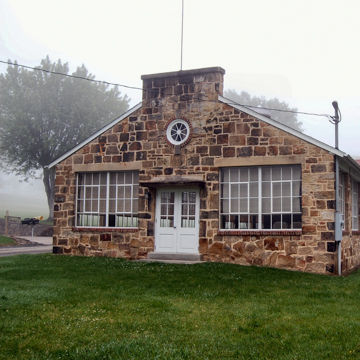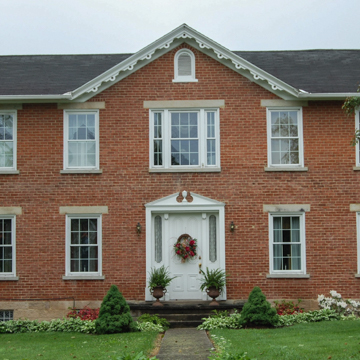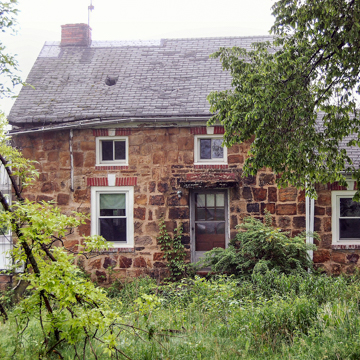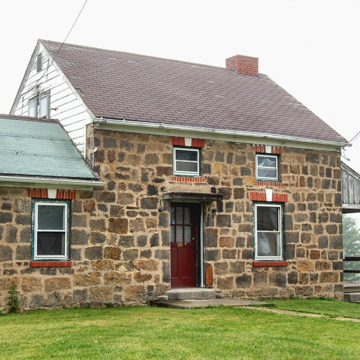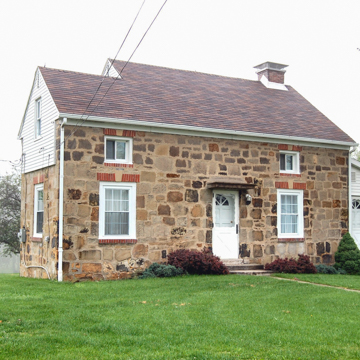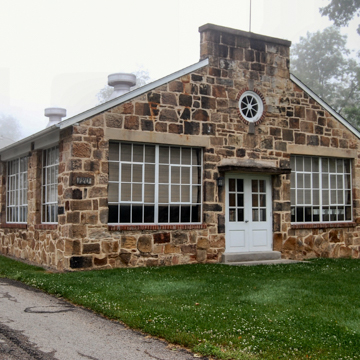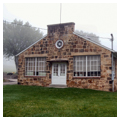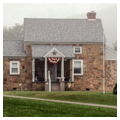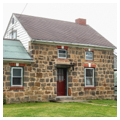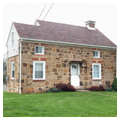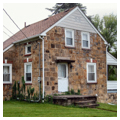In the 1920s, when most of the coking operations that employed many county residents were consolidated and moved to Pittsburgh, a crushing economic depression began with unemployment as high as 30 percent in the nearby coalfields. The American Friends Service Committee (AFSC), the service branch of the Quakers, who were determined to give people a new way of life, hired architect William Stanton, a Quaker from Philadelphia, to design model subsistence-homestead communities. Stanton, architect for several Atlantic City hotels in the 1920s and meetinghouse restorations, also designed two communities for the Norris and Cumberland Homesteads Communities for the Tennessee Valley Authority; the latter most resemble Penn-Craft. Its fifty houses are arranged along four culde-sacs accessed from Penncraft Road, each occupying a one- to three-acre site. The rural settlement is distinct from neighboring coal patches and early river towns because it looks like a 1930s suburban housing development. Each family chose their floor plan from the five available designs and customized them. This custom design took more of the architect's time than the AFSC had anticipated, so fifteen houses in the phase II addition of 1946 used floor plans from the Farm Security Administration's publication Small Houses (1939). The complex was designed around Isaiah N. Craft's original farmhouse purchased in 1937 and initially used as a community center; today it is a private home. Residents had a subsistence garden and were encouraged to work on the cooperative farm, the produce from which was sold in the cooperative store. They built a knitting factory in 1939, which was run by women and children during World War II; the stone building is now a community center. The cottages were built of stone quarried on an adjacent property by the prospective homeowners, who laid it themselves. Unlike most coal patch towns of the era, Penn-Craft's small stone houses had indoor bathrooms, garages, and cellars. So that community life could begin while the houses were under construction, Penn-Craft settlers built temporary wooden homes that were later converted to chicken coops. A few of the poultry houses remain.
Two-thirds of the community's present residents descend from the original families. Numerous additions to the original houses give the complex the suburban quality it has today. Penn-Craft was more an example of small house construction than a model of town planning. The AFSC has repeated its subsistence farming social experiment many times nationally and internationally. In 1989, the community was placed on the National Register of Historic Places.


